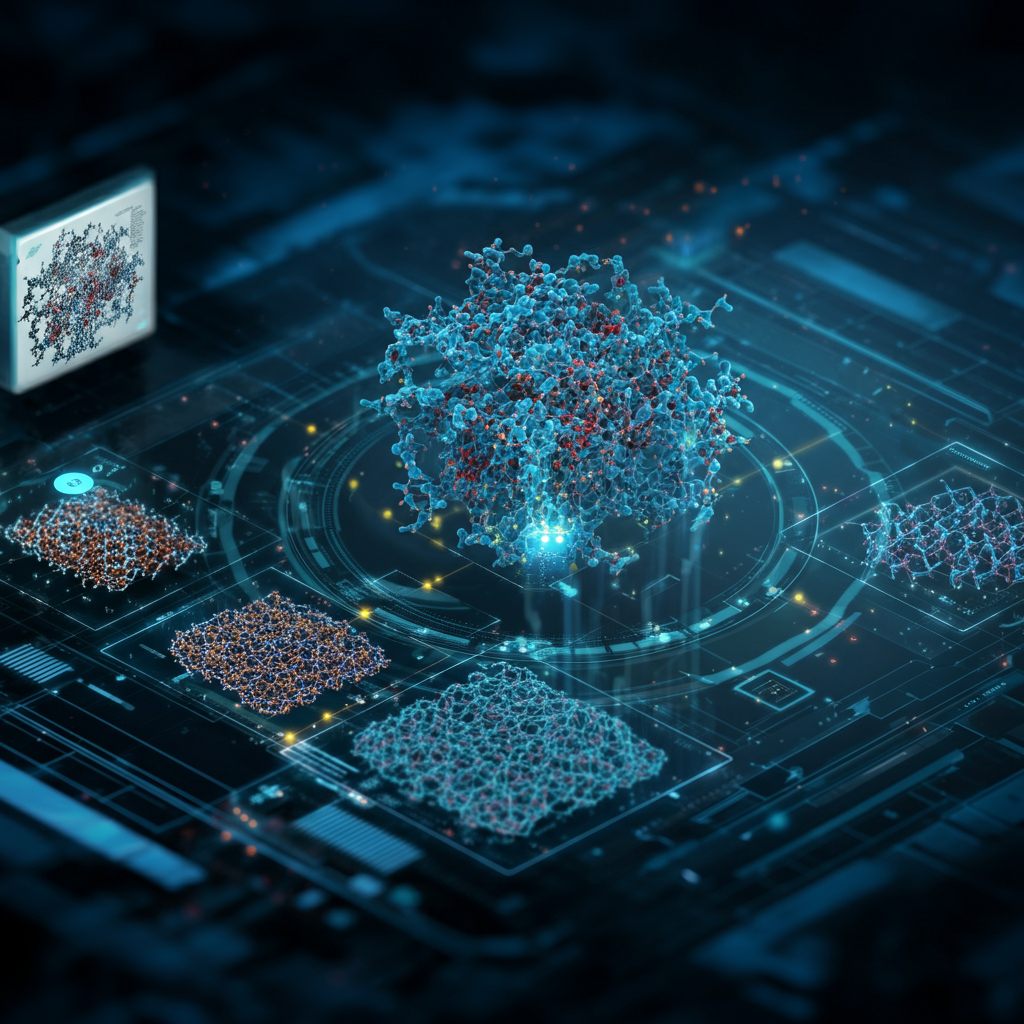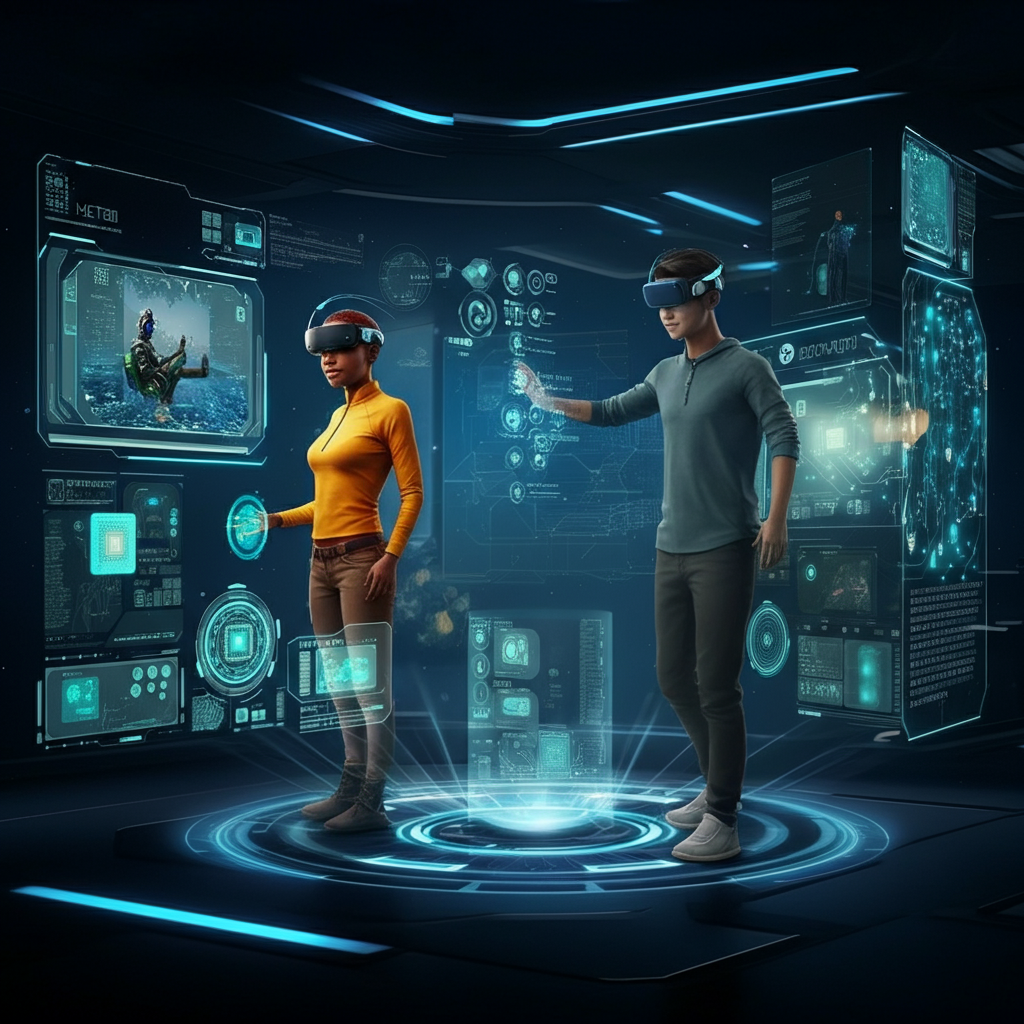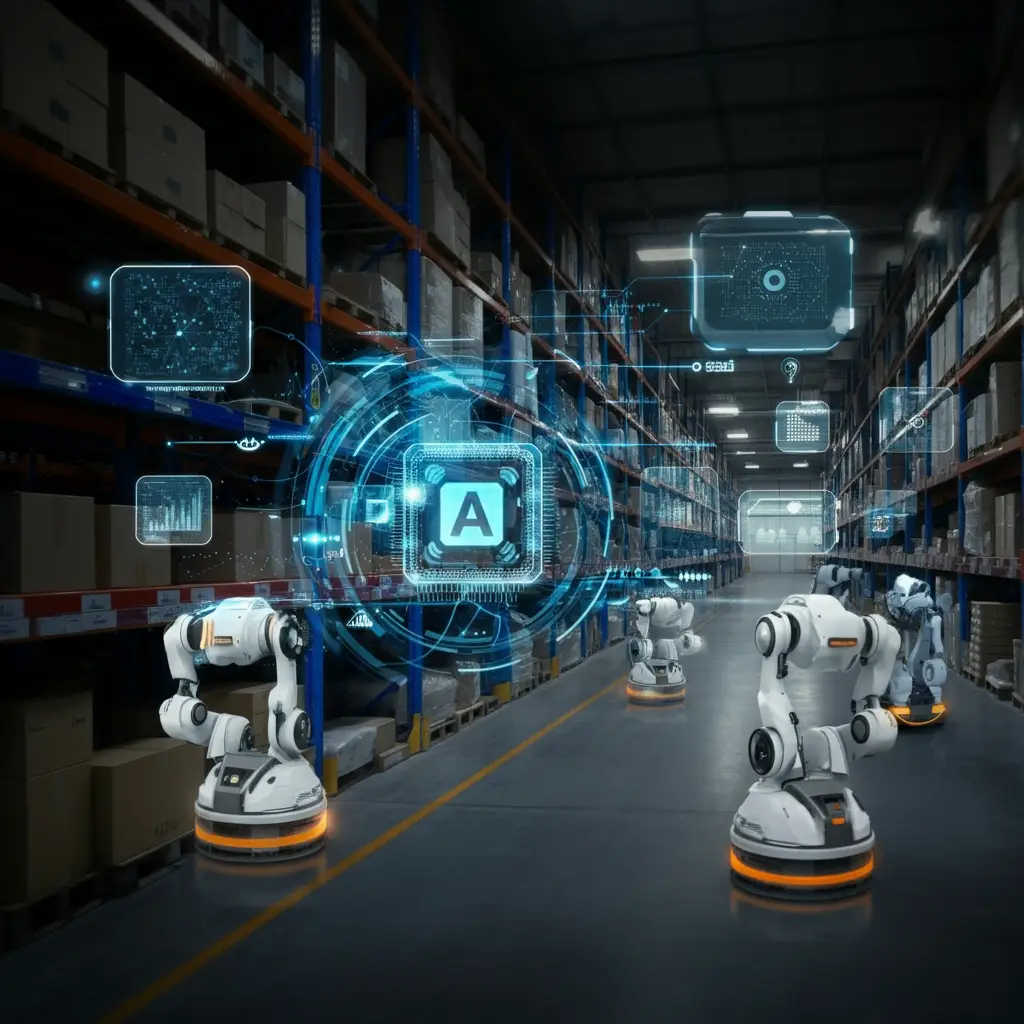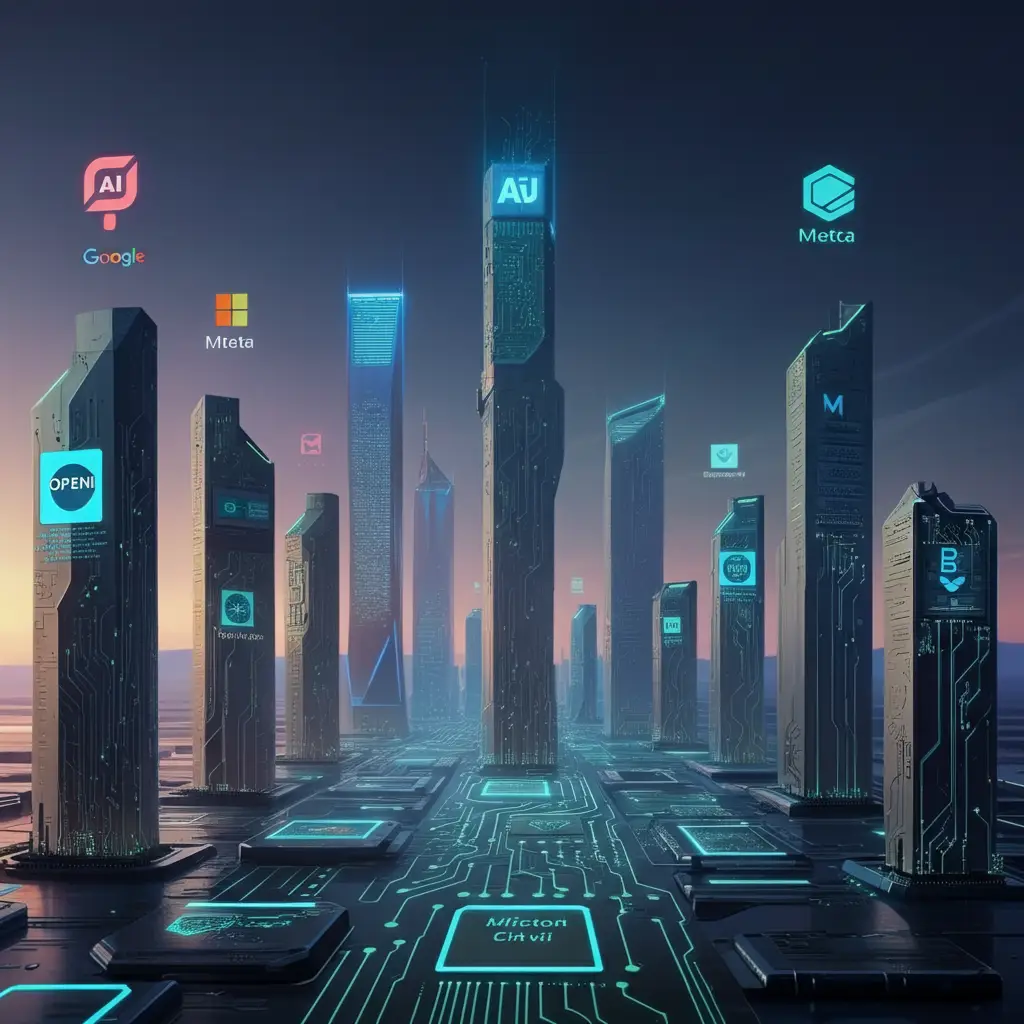The world is witnessing a seismic shift as artificial intelligence (AI) accelerates from promise to practicality. Among the trailblazers in the AI landscape, a few names dominate the headlines—OpenAI, Google DeepMind, Microsoft, Amazon, and Meta (formerly Facebook) are leading a cutthroat race for supremacy. This battle isn’t merely about showcasing cutting-edge technology; it’s about defining the future of innovation, workforce dynamics, and even societal structures through generative artificial intelligence.
These tech giants are investing billions into talent acquisition, groundbreaking research, and product innovation—each one vying to outpace the others. This article takes a deep dive into their strategies, rivalries, recent accomplishments, and challenges, ultimately exploring what this fierce competition means for the technology’s evolution and its ripple effects on humanity.
Introduction to Generative AI
Generative AI is a groundbreaking branch of artificial intelligence that leverages machine learning algorithms to create new content, ranging from text and images to music and videos. Unlike traditional AI, which focuses on analyzing and interpreting existing data, generative AI models are designed to produce original content that mimics the style and quality of the data they were trained on. This technology holds immense potential to transform industries such as entertainment, education, and marketing by enabling the creation of highly personalized and innovative content.
Generative AI models are trained on vast datasets, allowing them to learn intricate patterns and structures within the data. This training enables the models to generate content that is not only coherent but also contextually relevant. For instance, a generative AI model trained on a dataset of classical music compositions can create new pieces that sound remarkably similar to those of renowned composers. As the technology continues to evolve, the applications of generative AI are expanding, offering new possibilities for creativity and efficiency across various sectors.
Definition and Explanation
How Generative AI Models Work
Generative AI models operate by utilizing neural networks to discern patterns and structures within the training data. These models can be trained using different machine learning algorithms, including supervised, unsupervised, and reinforcement learning. The training process involves feeding the model a large dataset, which it uses to learn the underlying relationships and patterns within the data. Once the model has been trained, it can generate new content by applying the learned patterns to create data that is similar in style and quality to the original training data.
The core of generative AI models lies in their ability to understand and replicate the nuances of the training data. For example, a generative AI model trained on a dataset of human faces can generate realistic images of faces that do not exist in reality. This is achieved through a process known as “training,” where the model iteratively adjusts its parameters to minimize the difference between the generated content and the actual data. The result is a powerful AI model capable of producing high-quality, original content that can be used in a variety of applications, from text generation to image synthesis.
Technical Overview
AI Systems and Generative Models
AI systems encompass a wide range of technologies designed to perform tasks that typically require human intelligence. Within this broad category, generative models stand out for their ability to create new content rather than merely analyzing existing data. Generative AI systems, such as those developed by OpenAI and Google DeepMind, have demonstrated remarkable capabilities in generating text, images, and even music, pushing the boundaries of what artificial intelligence can achieve.
Generative models are a subset of AI systems that focus on producing new data based on the patterns learned from the training data. These models, including large language models and diffusion models, have become essential tools in the AI landscape. They enable the creation of highly realistic and contextually appropriate content, making them invaluable in fields such as natural language processing and creative industries. As the generative AI boom continues, these models are set to play a pivotal role in shaping the future of AI innovation and application.
By understanding the intricacies of generative AI systems and their potential, we can better appreciate the transformative impact they are poised to have on various aspects of our lives. From enhancing creative processes to automating complex tasks, generative AI tools are at the forefront of the next wave of technological advancement.
The Contenders and Their Unique Approaches
Each company in the AI race has carved out a distinctive identity in the field, leveraging its strengths and vision. Foundation models, which are large-scale AI models capable of performing a variety of tasks with minimal training, play a crucial role in generative AI by providing a versatile base for creating advanced AI systems. Here’s a closer look at the strategies driving their leadership in AI development.
OpenAI — The Trailblazer of Generative AI Models

OpenAI has rapidly become a household name in AI, especially with its game-changing large language models (LLMs), like GPT-4. The release of the ChatGPT platform put OpenAI at the center of public attention, demonstrating the potential of AI-driven conversational tools. What sets OpenAI apart is its clear focus on pioneering generative AI that feels almost human in its creative capabilities.
Key Moves and Breakthroughs
- Products: OpenAI’s release of GPT-4 expanded the boundaries of what AI could achieve. The model’s nuanced ability to assist with drafts, analyze data, or even produce full-fledged creative content solidified OpenAI as a market leader.
- Collaborations: Microsoft’s $10 billion investment in OpenAI in early 2023 gave the latter a significant boost. This partnership integrates OpenAI’s models into Microsoft’s suite of products, including Azure, Office 365, and even Microsoft Teams, thereby expanding accessibility to enterprise customers.
- Accessibility Focus: OpenAI has prioritized making its technology public through tools like ChatGPT and API integration, combined with efforts to educate users on responsible use.
Challenges
However, OpenAI faces intense scrutiny for its closed-policy shift over the years. Critics have argued that while the organization started as a nonprofit advocating open access, it has grown increasingly secretive as it’s scaled. Concerns over intellectual property rights and ethical AI remain a shadow over its public standing.
Google DeepMind — The Research Powerhouse in Natural Language Processing

While many know Google for its dominant search engine, its subsidiary DeepMind represents its AI muscle. Many generative AI models developed by DeepMind are utilized in a wide array of applications, including chatbots, programming tools, and multimedia content generation. Established in 2010 and acquired by Alphabet in 2014, DeepMind focuses on using AI to solve complex problems, both theoretical and practical. It’s famed for monumental achievements like building AlphaGo, which defeated world Go champions, and more recently launching AlphaFold, the revolutionary protein-folding predictor.
Recent Breakthroughs
- AlphaFold and Healthcare Applications
DeepMind’s AlphaFold arguably represents one of AI’s most meaningful applications, solving a 50-year-old challenge in biology by predicting protein structures with unprecedented accuracy. This tool is already accelerating drug discovery and disease research globally. - Gemini
DeepMind announced Gemini, its most advanced multimodal AI system, which promises to rival models like GPT-4 by excelling at diverse, complex tasks, from data analysis to emotional intelligence in interactions.
Strategic Edge
DeepMind integrates seamlessly with Google’s vast resources and talent. Google’s Bard AI, for example, benefits from DeepMind’s advancements, enabling top-tier natural language processing that integrates deeply with Google’s ecosystem.
Challenges
Despite its research dominance, DeepMind has often been perceived as lagging behind in commercializing breakthroughs. Unlike OpenAI, it has struggled to build user-facing products with mass appeal. Furthermore, operating as a subsidiary of Alphabet means its autonomy is somewhat restricted.
Microsoft — The Enterprise Enabler in AI Innovation

Microsoft, historically known for software like Windows and Office, has emerged as a dark horse in the AI race. By partnering with OpenAI and embedding AI deeply into its ecosystem, Microsoft is taking its enterprise dominance a step further by creating a future where AI-powered services become ubiquitous in workplaces.
Recent Moves
- Azure Integration
Microsoft has integrated OpenAI’s GPT models into Azure, providing businesses with easy access to generative AI tools. This move not only gives businesses scalability with AI but also positions Microsoft as an enabler for enterprises worldwide. - Copilot in Office 365
A standout innovation is Microsoft Copilot, an AI assistant embedded into widely-used tools like Word, Excel, and Teams. It streamlines tasks, writes code, and even automates workflows, making it indispensable for professionals.
Challenges
Microsoft’s reliance on OpenAI raises questions about its ability to innovate independently in generative AI. Additionally, as AI is increasingly integrated into workplace environments, challenges around data privacy, system errors, and user adaptability persist.
Meta — Building the Metaverse with AI at Its Core

Meta has taken a unique approach to AI, focusing on large-scale applications in social connectivity and futuristic digital environments. With its bet on the metaverse, AI is central to enabling natural interactions within immersive virtual spaces. One of the advanced AI techniques used by Meta includes the diffusion model, a type of generative AI model known for its scalability and flexibility, despite its lengthy reverse sampling process.
AI-Powered Transformations
- Llama Models
Meta announced the Llama family of language models as open-source alternatives to OpenAI and Google’s proprietary systems. Though less powerful, they’ve garnered interest in industries like education and research. - Content Moderation
Meta’s advanced AI is critical in moderating massive amounts of content across platforms like Facebook and Instagram, ensuring safety and usability for billions of users.
Challenges
Meta faces an uphill battle to gain public trust. Concerns about how its AI supports targeted advertising and privacy continue to overshadow discussions about its cutting-edge AI initiatives.
Amazon — Quiet Yet Pervasive

Amazon might not make the same splashy headlines, but it has integrated AI into its operations at a scale that few can rival. From the algorithms behind Alexa to its AI-driven recommendation systems and supply-chain optimization, Amazon’s AI deployments have become part of everyday life for millions.
Focus Areas
- AWS Machine Learning
Amazon Web Services is a leader in providing AI tools for businesses of all sizes. From pre-trained models to custom ML solutions, AWS dominates the cloud AI space. - Conversational AI
Alexa, once the poster child of voice assistants, continues to evolve, improving its contextual understanding capabilities by leveraging Amazon’s advancements in deep learning.
Challenges
Amazon’s research dominance appears limited to practical applications; the company lacks the public-facing breakthroughs seen at OpenAI or DeepMind.
Challenges Heated Competition Brings
While these tech titans push the boundaries of AI, challenges abound in the race for dominance, particularly with the energy consumption and efficiency of machine learning models.
Ethical Dilemmas
The potential misuse of technologies like deepfakes, generative AI-based fraud, and biased algorithms highlights the need for stronger oversight. Most major players are under scrutiny for either mishandling data privacy or insufficient transparency in AI model training.
Resources and a Talent Gap
The race for AI supremacy is expensive. From acquiring research labs to retaining top minds in AI, the giants are locked in fierce competition that has driven up the cost of specialization training. Smaller firms and academia struggle to keep up with these monopolistic moves.
Government Regulation and Public Pressure
Governments are beginning to step in with regulations aimed at reigning in tech companies. For example, Europe’s AI Act could set a global standard for accountability. Additionally, controversies such as AI’s role in job displacement bring fierce public criticism.
The Future of AI and Tech Competition
The rivalry among these tech giants shows no signs of abating. Looking ahead, we can expect a few key trends to shape the AI landscape further:
- Collaborative Platforms
Companies might combine forces, especially in areas like healthcare or climate innovation, where sharing knowledge to solve grand challenges trumps outright dominance. - Stronger Regulations
With increased global scrutiny, regulatory frameworks for AI will become more comprehensive. Tech companies will need to innovate within these restrictions and focus on transparency. - AI Democratization
Open-source models, like those from Meta and independent labs, could thrive alongside proprietary solutions, driving a new era of affordable AI tools for smaller enterprises and individuals. - AI and the Workforce
From automating mundane tasks to redefining entire job roles, AI will have its most profound impact on how people work. Retraining programs and education will be critical for this transition.
Final Thoughts
The race for AI supremacy among tech giants is more than just a battle for market share—it’s a race that will shape the future of industries, societies, and global innovation. Companies like OpenAI, Google DeepMind, Microsoft, Meta, and Amazon have driven AI’s meteoric rise, but they are just scratching the surface of what’s possible. As competition fuels continuous breakthroughs, we also need ethical and equitable approaches that ensure AI serves humanity at large.
While only time will reveal who emerges victorious in this high-stakes contest, one thing is clear—the ambition of these tech giants will forever alter the trajectory of technology itself.
